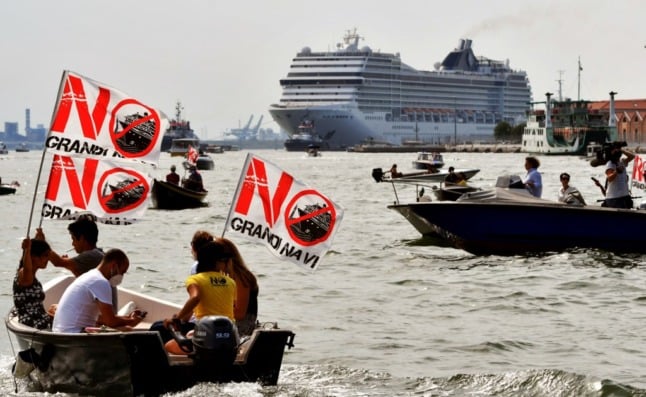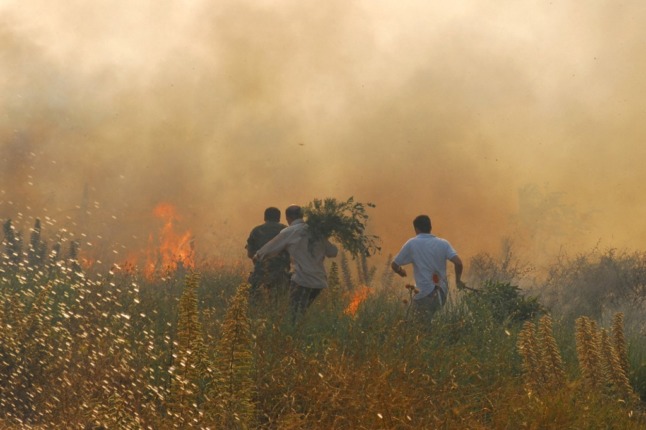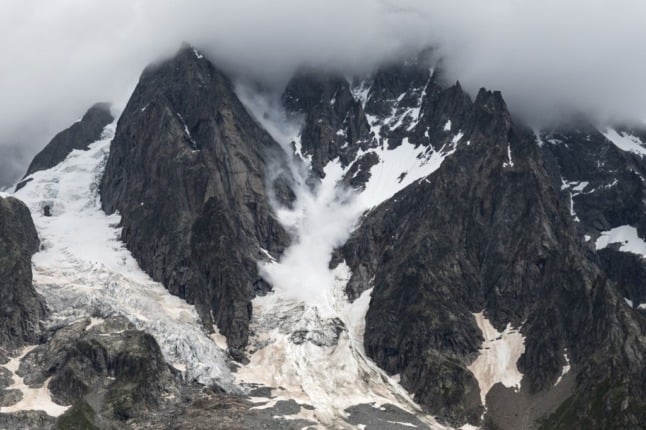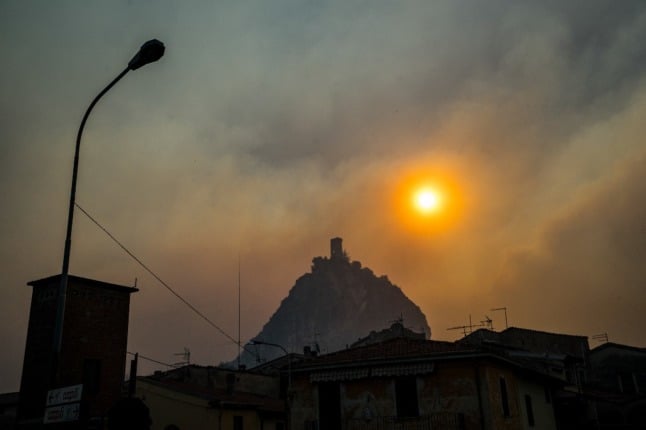“Widespread, rapid and intensifying” is the headline of a study by the Intergovernmental Panel on Climate Change (IPCC).
Scientists have observed changes in the climate across the entire Earth, across every region – a phenomenon that is being felt strongly in Italy as wildfires and blistering heatwaves sweep the country, with 17 cities on red warning weather alerts this weekend.
The Italian side of the Mont Blanc massif is also currently at melting point and could collapse, threatening the village below, while the heat in Sicily is set to break European records with a scorching 48.8 degrees C reported near Syracuse on Wednesday.
Many of the changes observed in the climate are unprecedented in thousands, if not hundreds of thousands of years, revealed the report by the United Nations body for assessing climate change.
Some of the developments already happening, such as rising sea levels, are said to be irreversible over hundreds to thousands of years.
Scientists have said that it is already too late to do anything about some of the climate change witnessed in parts of the world and that global temperatures could rise by 1.5 degrees this century.
The report, which three Italian academics contributed to, projects that in the coming decades climate changes will increase in all regions.
If 1.5 degrees C of global warming is reached, there will be increased heatwaves, longer warm seasons and shorter cold seasons.
At 2 degrees C of global warming, heat extremes would reach critical levels for agriculture and health more often, the report showed.
READ ALSO:
- Six shocking statistics about the climate crisis in Italy
- What to do and what to avoid if you see a wildfire in Italy
- Human action responsible for 70 percent of Italy’s wildfires, minister says
“An alarming picture emerges from the latest UN report on climate. It is an issue that concerns all of us and every aspect of our lives,” wrote Italy’s foreign minister Luigi Di Maio on Facebook.
Rising temperatures aren’t the only major concern. Climate change is creating shifts in wetness and dryness, winds, snow and ice, coastal areas and oceans, according to the findings.
In Europe, regardless of future levels of global warming, temperatures will rise in all European areas “at a rate exceeding global mean temperature changes,” the report found.
In the Mediterranean region, scientists have observed an increase in droughts and project an increase in aridity and fire weather conditions at global warming of 2 degrees C and above.
By the middle of the century, more extreme weather temperatures are expected, along with more droughts and less snow and wind.
Coastal areas are expected to witness continued sea-level rises throughout the 21st century, which could lead to more frequent and severe flooding and coastal erosion. Extreme sea-level events that used to occur once every 100 years could happen every year by the end of this century, scientists warned.
READ ALSO: World Ocean Day: What is Italy doing to protect its seas?

Based on the IPCC’s report, NASA has created a sea level change tool to see how rising ocean levels would affect different parts of the world.
If no additional climate policies are adopted, Venice could experience an increase in sea levels by as much as 0.87 metres by the end of the century.
Even if global warming levels don’t exceed 1.5 degrees C by 2100 (compared to temperatures in the 1850-1900 period) – and if net zero emissions are achieved by the middle of the century, sea levels around Venice are expected to rise by 3.2mm per year.
That makes an increase of 0.41 metres by the end of the century, as the minimum.
These are devastating statistics for a city already under environmental threat – with the city narrowly avoiding being put on the Unesco endangered list after Italy recently moved to ban large cruise ships from sailing into the city centre.
ANALYSIS: Is Venice really banning cruise ships from the lagoon at last?
Other parts of Italy are also under similar levels of danger from rising sea levels, with Cagliari in Sardinia forecast to experience an increase of 0.88 metres by 2100 if no climate change measures are made.
“This report is a reality check,” said IPCC co-chair Valérie Masson-Delmotte.

“It has been clear for decades that the Earth’s climate is changing, and the role of human influence on the climate system is undisputed,” she added.
Greenhouse gas emissions from human activities are responsible for about 1.1 degrees of warming compared to the period 1850-1900, the report revealed.
“The evidence is clear that carbon dioxide (CO2) is the main driver of climate change, even as other greenhouse gases and air pollutants also affect the climate,” stated the report.
The report also shows that human actions can still determine the Earth’s climate in the future for the better.
“We now have a much clearer picture of the past, present and future climate, which is essential for understanding where we are headed, what can be done, and how we can prepare,” she added.
READ ALSO: Climate campaigners sue Italian government for failing to tackle climate crisis

What is Italy doing to fight climate change?
Italy is already facing extreme climate change events – it ranked first in the European Union for the number of major fires in 2021, according to the EU Commission.
It is also lagging behind in the objectives of the Recovery and Resilience Plan and much more needs to be done, according to Italian environmental group Legambiente.
Campaigners criticised the 750-billion-euro pandemic Recovery Fund, which included the aim of Italy becoming “carbon free” by 2050, for not being ambitious enough.
However, the government is preparing to appoint a representative by September to tackle the problems posed by climate change.
“We need to give an effective response, without wasting time. This is why we have decided to provide our country with a strategic figure in this field, namely the special envoy for climate change, as has already been done by the United States, the United Kingdom, France and Germany,” stated Di Maio.
This person will be in charge “following the negotiations and representing Italy at all international tables,” he added.
READ ALSO: Italy postpones plastic tax again due to Covid-19 pandemic
Experts have called for immediate action with faster timelines: the goal of climate neutrality, set for 2050, should be brought forward, stated former environment minister Edo Ronchi, who has called on Italy to adopt “a law to protect the climate”.
“Climate change is already affecting every region on Earth, in multiple ways. The changes we experience will increase with additional warming,” said IPCC co-chair Panmao Zhai.
“Stabilising the climate will require strong, rapid, and sustained reductions in greenhouse gas emissions, and reaching net zero CO2 emissions. Limiting other greenhouse gases and air pollutants, especially methane, could have benefits both for health and the climate,” he added.



 Please whitelist us to continue reading.
Please whitelist us to continue reading.
Climate change is a serious threat to human civilization that has been ignored by monied interests for decades. Greed and short-term political thinking will be the death of us.